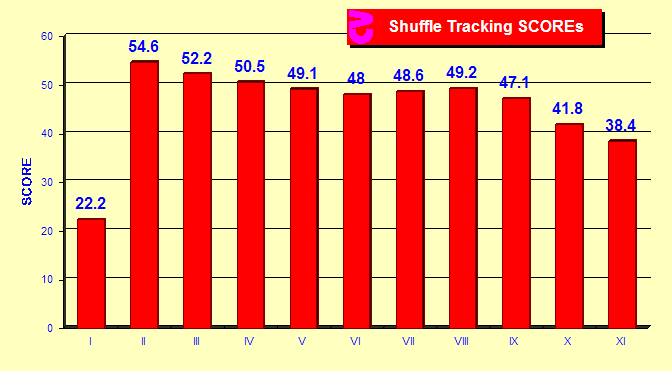Automatic Monkey
Banned
Yes I am aware of what it does, but it is not always better to settle for an estimate of an average when the other option is seeing the cards come out and knowing your exact advantage.RJT said:That's why you use the NRS formula - as it accurately estimates your average advantage given all possible packet compositions. But ho hum we've discussed all of this before.
What a total ****ing tool you are!
RJT.
To elaborate further, the shuffles available to me are not appropriate for finding an advantage with shuffle tracking and cut card control alone. At the same time, I prefer to miss as many hands in the beginning of a shoe as possible, for the usual reason. If I'm going to do that, I prefer to see low cards dealt out.

